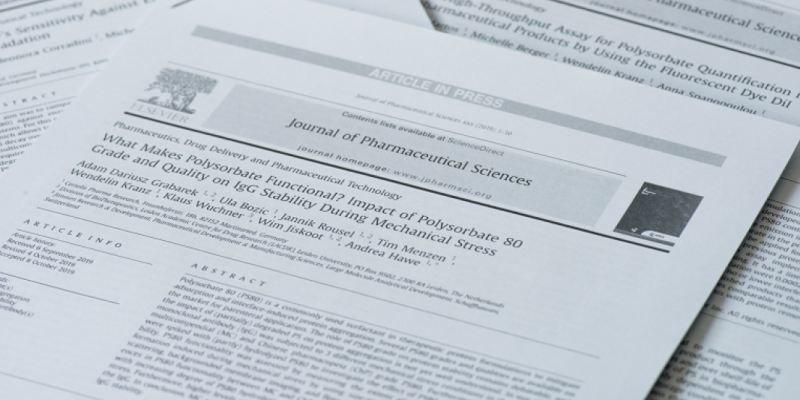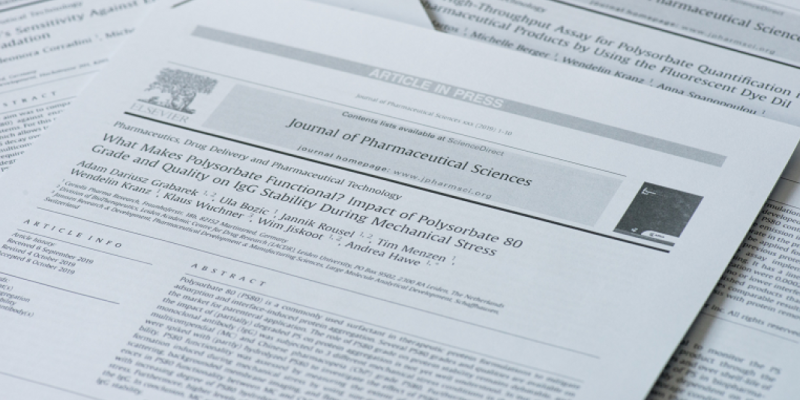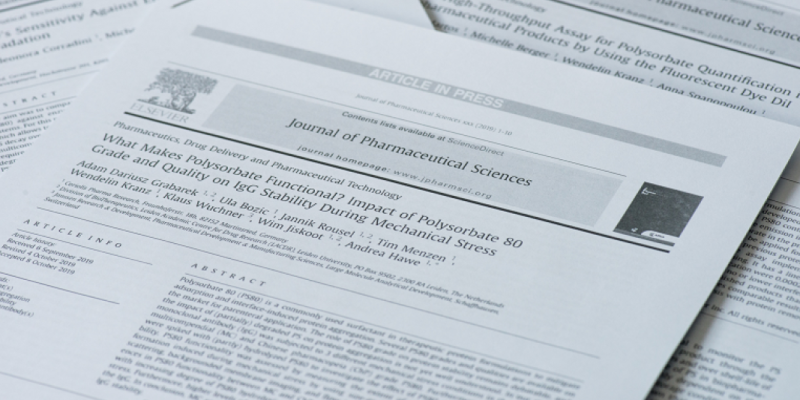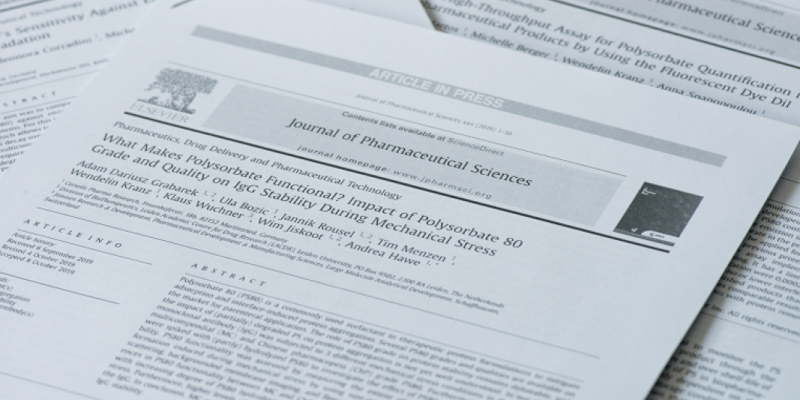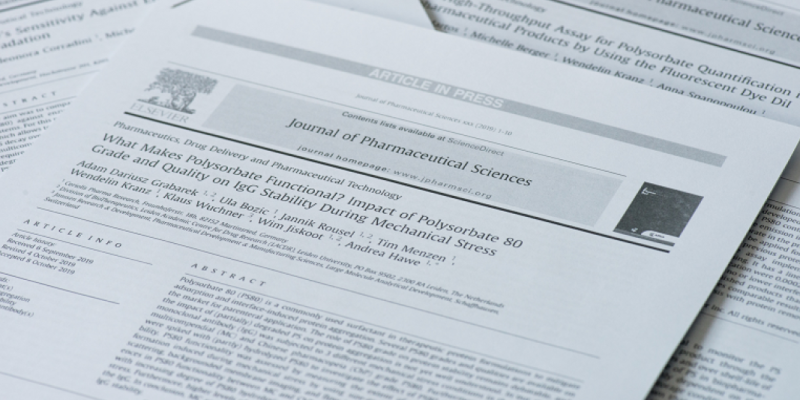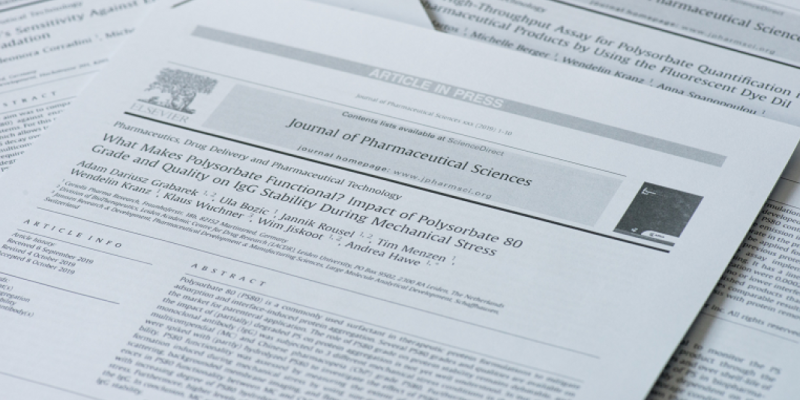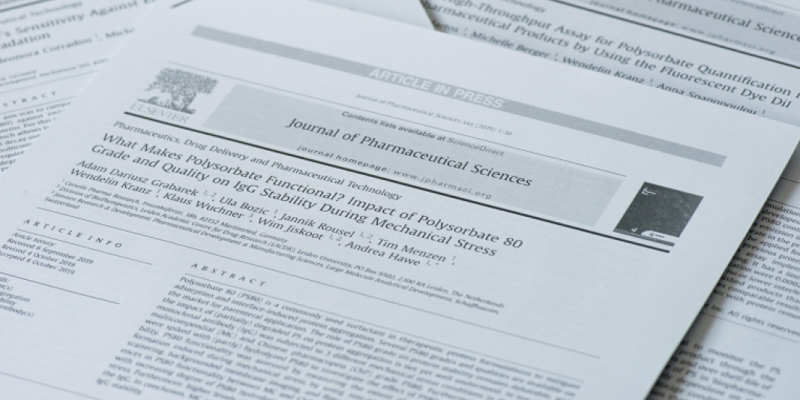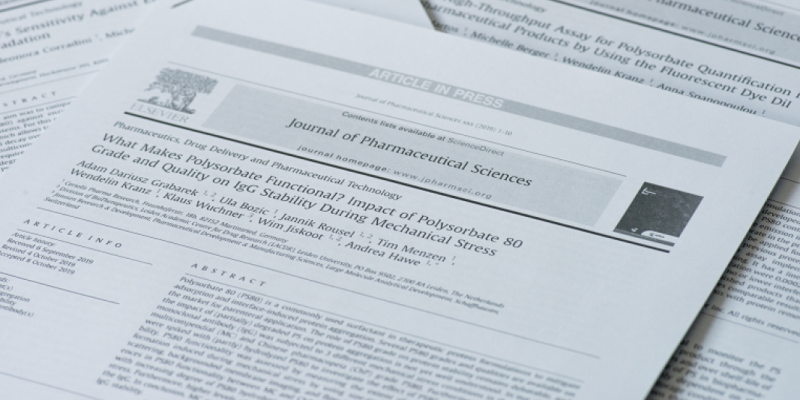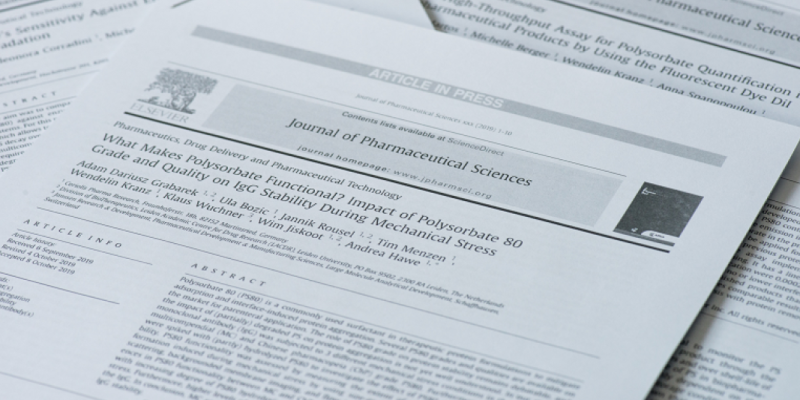Structural properties of monoclonal antibody aggregates induced by freeze-thawing and thermal stress.
Eur J Pharm Sci. 2009 Sep
Aggregation of monoclonal antibodies can be induced by freeze-thawing and elevated temperature, typical stress factors during development, production and storage. Our aim was to characterize structural properties of aggregates formed after freeze-thawing and thermal stressing of humanized monoclonal IgG(1) antibody (IgG). Formulations with 1.0mg/ml IgG in 100mM phosphate pH 7.2 were subjected to freeze-thawing and heating and characterized by spectroscopic techniques (UV-absorption, CD, ATR-FTIR and fluorescence), light obscuration, dynamic light scattering, SDS-PAGE, AF4 with UV and MALLS detection, and HP-SEC with UV and online fluorescent dye detection. Thermal stress led to an increased formation of dimers and soluble oligomers (HP-SEC, AF4). Aggregates smaller than 30nm were measured (DLS), next to slightly elevated particle levels in the mum range (light obscuration). Aggregates created by heating were in part covalently linked (SDS-PAGE) and made up of conformationally perturbed monomers (CD, ATR-FTIR, extrinsic dye fluorescence). Aggregation after freeze-thawing was manifested primarily in particle formation in the mum range. These aggregates were noncovalently linked (SDS-PAGE) and composed of native-like monomers, as obvious from CD, ATR-FTIR and extrinsic dye fluorescence spectroscopy. In conclusion, the complementary methods used in this study revealed that heating and freeze-thawing induced aggregates differ significantly in their physico-chemical characteristics.
Eur J Pharm Sci. 2009 Sep
https://www.sciencedirect.com/science/article/pii/S0928098709001778?via%3Dihub=


